Pamela Guevara
Especialidad:
Análisis de imágenes médicas, estudio de conectividad cerebral, machine learning, neurociencia computacional.
Pamela es ingeniera civil electrónica de la Universidad de Concepción, con master en información, sistemas y tecnología con especialidad en imágenes médicas, y un doctorado en física, ambos diplomas de la Université Paris-Sud, Francia.
PUBLICACIONES
Publisher: NPJ Science of Learning Link>
ABSTRACT
Young children’s linguistic and communicative abilities are foundational for their academic achievement and overall well-being. We present the positive outcomes of a brief tablet-based intervention aimed at teaching toddlers and preschoolers new word-object and letter-sound associations. We conducted two experiments, one involving toddlers ( ~ 24 months old, n = 101) and the other with preschoolers ( ~ 42 months old, n = 152). Using a pre-post equivalent group design, we measured the children’s improvements in language and communication skills resulting from the intervention. Our results showed that the intervention benefited toddlers’ verbal communication and preschoolers’ speech comprehension. Additionally, it encouraged vocalizations in preschoolers and enhanced long-term memory for the associations taught in the study for all participants. In summary, our study demonstrates that the use of a ludic tablet-based intervention for teaching new vocabulary and pre-reading skills can improve young children’s linguistic and communicative abilities, which are essential for future development.
Publisher: IEEE Explore Link>
ABSTRACT
Autism Spectrum Disorder (ASD) is a neurodevelopmental condition that affects social communication and behavior. Early diagnosis is crucial to enhance the patient’s quality of life through treatments and therapies. In this research, two white matter (WM) fiber bundle segmentation methods are analyzed and compared in terms of their performance and impact on the results obtained from the analyzes applied to a database comprising 37 adolescents, 19 subjects with autism and 18 controls. To achieve this, we conducted the segmentation of deep white matter tracts, and computed average diffusion-based indices for each tract, such as Apparent Diffusion Coefficient (ADC), Fractional Anisotropy (FA), and Generalized Fractional Anisotropy (GFA). We applied statistical tests to identify features with significant differences between groups based on the results of two segmentation methods. Significant differences in diffusion-based indices were found in certain cingulate, thalamic, corticospinal, and corpus callosum fascicles. Furthermore, we performed classification between patients and controls using each fascicle feature independently with the Support Vector Machine (SVM) and Decision Trees (DT) algorithms. Finally, we applied the classifiers to the most relevant features for each segmentation method. Overall, even with the limitations of our small database, we demonstrated that the segmentation algorithm has a high impact on WM tract-based analyzes and prediction, with the autocencoder-based algorithm showing better results than a distance-based method.
Publisher: IEEE Explora Link>
ABSTRACT
There is ongoing interest in the dynamics of resting state brain networks (RSNs) as potential predictors of cognitive and behavioural states. Multivariate Autoregressors (MAR) are used to model regional brain activity as a linear combination of past activity in other regions. The coefficients of the MAR are taken as estimates of effective brain connectivity. However, assumption of stationarity, and the large number of coefficients renders the MAR impractical for estimating brain networks from standard neuroimaging time-series of limited durations. We propose HsMM-MAR-AC, a novel sparse hybrid discrete-continuous model for the efficient estimation of time-dependent effective brain networks from non-stationary brain activity time-series. Discrete quasi-stationary Brain States, and the fast switching between them, are modelled by a Hidden semi-Markov Model whose continuous emissions are drawn from a sparse MAR. The coefficients of the MAR are restricted by Anatomical Brain Connectivity information in two ways: 1) Effective direct connectivity between two brain regions is only considered if the corresponding anatomical connection exists; and 2) the autoregressors lag associated with each connection is based on the fiber length between the two regions, such that only one lag per connection is estimated. We test the accuracy of HsMM-MAR-AC in recovering simulated resting state networks of various durations, and at different thresholds of anatomical restrictions. We demonstrate that HsMM-MAR-AC recovers the RSNs more accurately than the benchmark method of the sliding window, with as little as 4 minutes of data. We also show that when the anatomical restrictions are relaxed, longer time-series are needed to estimate the networks, and became computationally unfeasible without anatomical restrictions. HsMM-MAR-AC offers an efficient model for estimating time-dependent Effective Connectivity from neuroimaging data that exploits the advantages of Hidden Markov and MAR models without identifiability problems, excessive demand on data collection, or unnecessary computational effort.
Publisher: IEEE Explore Link>
ABSTRACT
Brain neuronal networks of structural and func-tional connections have a hierarchical organization and a complex relationship between them. To study brain dynamics, it is important to identify the cortical level of parcellation of greater metastability. This paper presents a new multiscale cortical parcellation method based on the geodesic distance between vertices of the cortical surface and agglomerative hierarchical clustering, starting from an anatomical parcellation. First, the centroids of each region are efficiently calculated using the geodesic distance between the region’s vertices. Then, an affinity graph is constructed between the region centroids, based on the geodesic distance, from which a dendrogram is constructed using hierarchical clustering. Finally, an adaptive tree partitioning method is employed to obtain parcellations at various granularity levels, producing a multiscale parcellation. Furthermore, we propose an optimized method for the calculation of structural connectomes for each parcellation level. This framework will be made available and can be applied to different fine-grained parcellations. Additional information, such as structural connectivity information can be easily added to the framework. In future work this multiscale cortical parcellation will allow for simulations of cerebral dynamics at different levels.
Publisher: Frontiers in Neuroscience Link>
ABSTRACT
We present a Python library (Phybers) for analyzing brain tractography data. Tractography datasets contain streamlines (also called fibers) composed of 3D points representing the main white matter pathways. Several algorithms have been proposed to analyze this data, including clustering, segmentation, and visualization methods. The manipulation of tractography data is not straightforward due to the geometrical complexity of the streamlines, the file format, and the size of the datasets, which may contain millions of fibers. Hence, we collected and structured state-of-the-art methods for the analysis of tractography and packed them into a Python library, to integrate and share tools for tractography analysis. Due to the high computational requirements, the most demanding modules were implemented in C/C++. Available functions include brain Bundle Segmentation (FiberSeg), Hierarchical Fiber Clustering (HClust), Fast Fiber Clustering (FFClust), normalization to a reference coordinate system, fiber sampling, calculation of intersection between sets of brain fibers, tools for cluster filtering, calculation of measures from clusters, and fiber visualization. The library tools were structured into four principal modules: Segmentation, Clustering, Utils, and Visualization (Fibervis). Phybers is freely available on a GitHub repository under the GNU public license for non-commercial use and open-source development, which provides sample data and extensive documentation. In addition, the library can be easily installed on both Windows and Ubuntu operating systems through the pip library.
Publisher: IEEE Explore 19th International Symposium on Medical Information Processing and Analysis (SIPAIM) Link>
ABSTRACT
This paper analyzes the relationship between DTI measures obtained in white matter bundles and the degree of cognitive impairment in subjects with different levels of impairment, from healthy subjects to subjects with Alzheimer’s disease, including intermediate stages such as subjective cognitive impairment and mild cognitive impairment. Subjects’ fibers were segmented using deep and superficial white matter bundle atlases to extract diffusion measures for each bundle. These measures were correlated with subjects’ cognitive scores obtained from the Montreal Cognitive Assessment (MoCA). The bundles presenting significant correlations were then used to determine the significant differences in diffusion-based measures across the progression stages of cognitive impairment. The results showed a total of 16 long bundles and 8 short bundles presenting correlation of DTI measures with cognitive impairment, and significant differences between groups.

Edificio de Innovación UC, Piso 2
Vicuña Mackenna 4860
Macul, Chile
Vicuña Mackenna 4860
Macul, Chile



